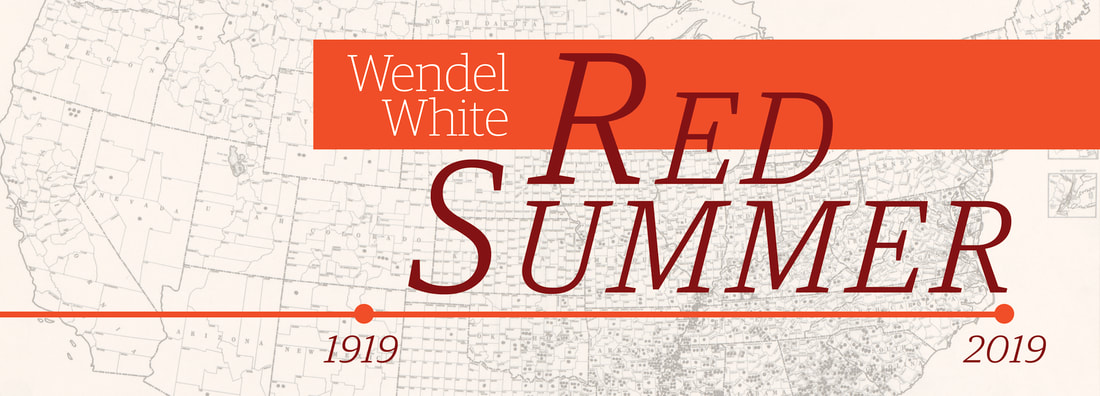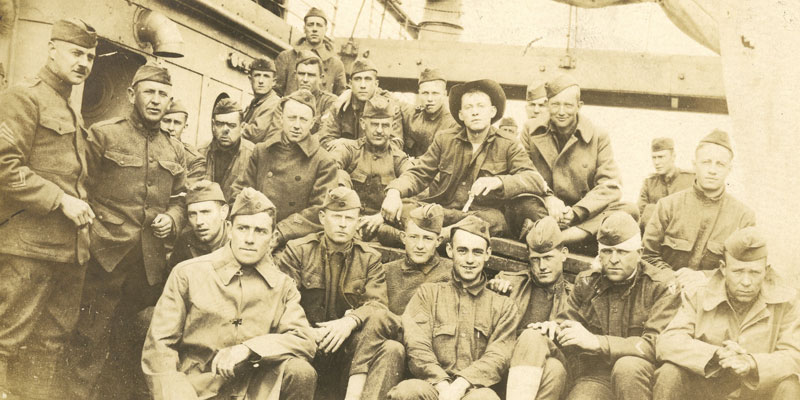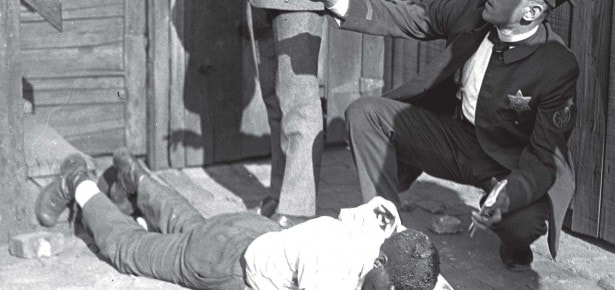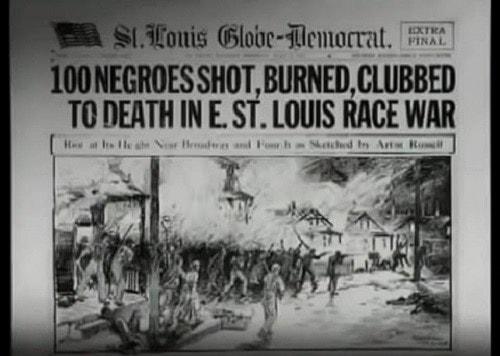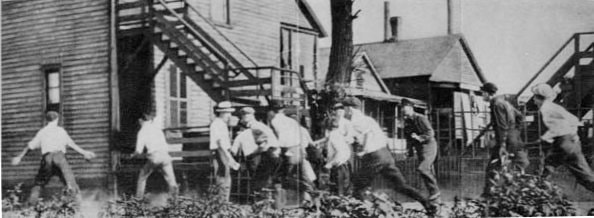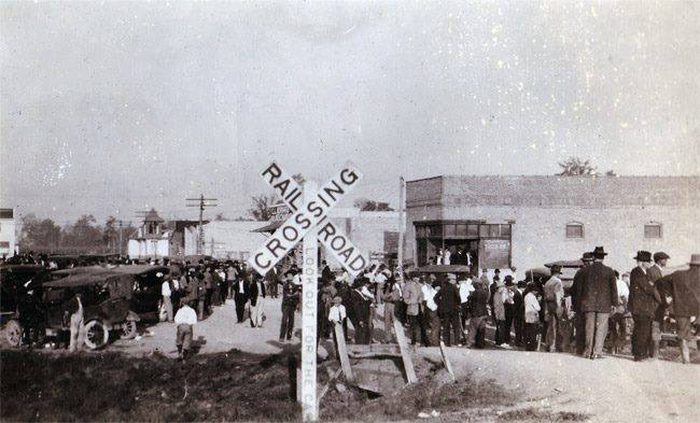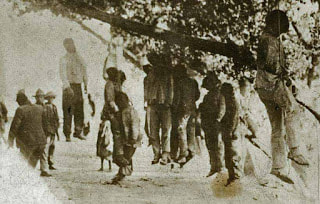|
They Called 1919 The Red Summer. Much of the trouble in the summer of 1919 revolved around people trying to get decent work for a living wage. But underneath boiled and bubbled rampant white supremacist ideals and corporate greed. Here's a look at conditions pervading the United States at the time.
Both black and white veterans went looking for jobs in a post-war economy. Employment couldn't be found in cities or rural America. Labor strikes turned bloody when wartime price controls lifted and industrial companies tried to preserve wartime profit levels, often hiring blacks from the south to break strikes. You know that story if you've read my book Fannie Never Flinches. 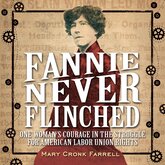 At a time when most unions denied African Americans membership, Fannie was one of the few labor leaders to welcome blacks. And she became one of the hundreds of Americans to die that bloody summer. Fannie Sellins was shot to death late in the summer of 1919, when Allegheny Coal and Coke hired armed guards to badger strikers and provoke violence. This year, to mark the 100th Anniversary of Fannie Sellins' death, folks in Western Pennsylvania and West Virginia will gather to remember her love of working people, her courage and the ideals for which she gave her life. See News & Links below for my speaking schedule at these events. Warning: Graphic images accompany the article below. The Red SummerThere was no justice for Fannie's killing. Authorities and jurors agreed she died as a result of a "riot" perpetrated by union strikers. Even more atrocious—hundreds of black Americans killed in cold blood that summer—their killers never facing charges or trial. Their deaths blamed on "race riots" supposedly started by the blacks themselves. Major clashes between whites and blacks broke out in more than three dozen cities and towns across America, from Chicago to Washington D.C., from Bisbee, Arizona to Syracuse, New York. See a map of the deadly violence here... In separate incidents, white supremacists lynched at least 100 African Americans. All this, with no repercussions for the killers, in fact they were sometimes aided in the murders by local law officers and U.S. Army troops called in to police the violence. Civil rights activist and author James Weldon Johnson called the time period Red Summer but the wanton killing went on from early 1919, through the spring, summer, and early autumn of that year. The episodes of deadly violence often lasted for days. In Chicago, the killing and destruction of property in black neighborhoods went on for a week, as mobs tried to drive African Americans from industrial jobs and white neighborhoods. Often the excuse was the need to “protect” white women against the alleged assaults of black men. Denied protection of the law, African Americans took up arms to defend themselves. Especially in Chicago and Washington D.C., newly returned black veterans of World War I organized and carried out armed resistance against the white mobs. This added fuel to the false accusations of "race riots" instigated by blacks. The most heinous attacks, a racially-motivated massacre, took place over several days in Phillips County, Arkansas. In the area of cotton plantations, blacks, mostly sharecroppers, outnumbered whites ten to one. African American sharecroppers attempted to unionize. When several whites showed up to harass a meeting of the Progressive Farmers and Household Union of America. Debate remains over who fired first, but a white man was killed and the deputy sheriff injured. The next morning, a posse formed to arrest suspects in the shootings. Up to one-thousand white men from surrounding counties and as far away as Mississippi and Tennessee gathered in Elaine, Arkansas. The armed force met little opposition from the blacks in the county, but hysteria and an imagined black insurrection swept through the group. The mob started indiscriminately killing black men, women and children, and ransacking their homes. Federal troops were sent in to "put down the rebellion" and joined the killing spree. 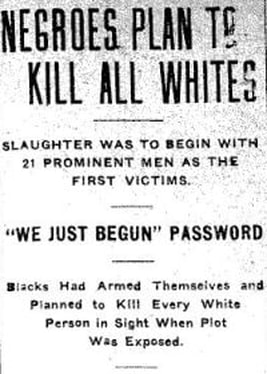 An unknown number of African Americans were killed, though the black community estimated at least 240 dead in the largest known massacre of blacks in American history. White newspapers reported the insurrection of blacks had been brought to heel with the deaths of five whites and approximately one-hundred blacks. That's the way it happened with all the violence involving blacks and whites that year. White newspapers blamed the victims for starting the violence and reported false stories to justify the murders. Image shows newspaper report following the massacre of blacks in Phillips County, Arkansas. Similarly, 1919 headlines misrepresented legitimate labor strikes as crimes against society, conspiracies against the government and plots to establish Communism. And so, history was written. The truth of what happened in Arkansas has only begun to be reported accurately in the last decade. And a look at most any U.S. history textbook, if it mentions the events of 1919 at all, calls the mob killings of blacks "race riots" and distorts the truth, giving short shrift to racism and efforts by African Americans to defend themselves, framing the violence as the fault of "both sides." Looking clearly at our history is necessary to understand current events and to end the echoing of the dangerous words that twist the truth and manipulate us. Sources: https://www.teenvogue.com/story/the-red-summer-of-1919-explained https://courses.lumenlearning.com/boundless-ushistory/chapter/the-transition-to-peace-1919-1921/ https://www.arcgis.com/apps/MapJournal/index.html?appid=56186312471f47eca8aff16a8a990aa8 https://www.zinnedproject.org/if-we-knew-our-history/remembering-red-summer |
I'm fascinated to discover little-known history, stories of people and events that provide a new perspective on why and how things happened, new voices that haven't been heard, insight into how the past brought us here today, and how it might guide us to a better future.
I also post here about my books and feature other authors and their books on compelling and important historical topics. Occasionally, I share what makes me happy, pictures of my garden, recipes I've made, events I've attended, people I've met. I'm always happy to hear from readers in the blog comments, by email or social media. Archives
September 2023
Categories
All
|
